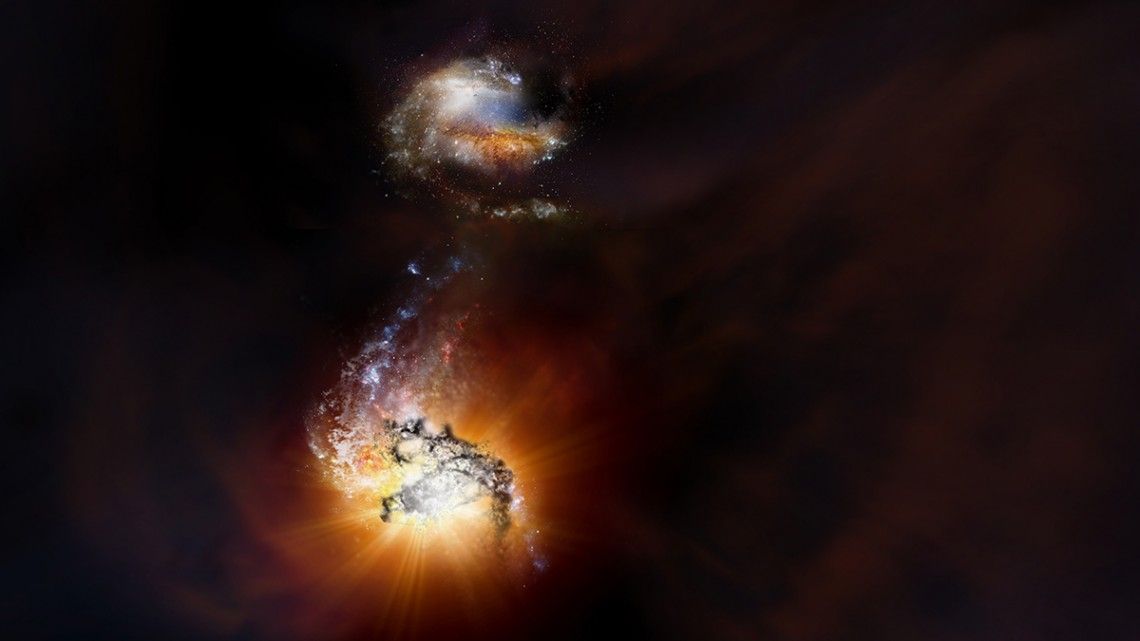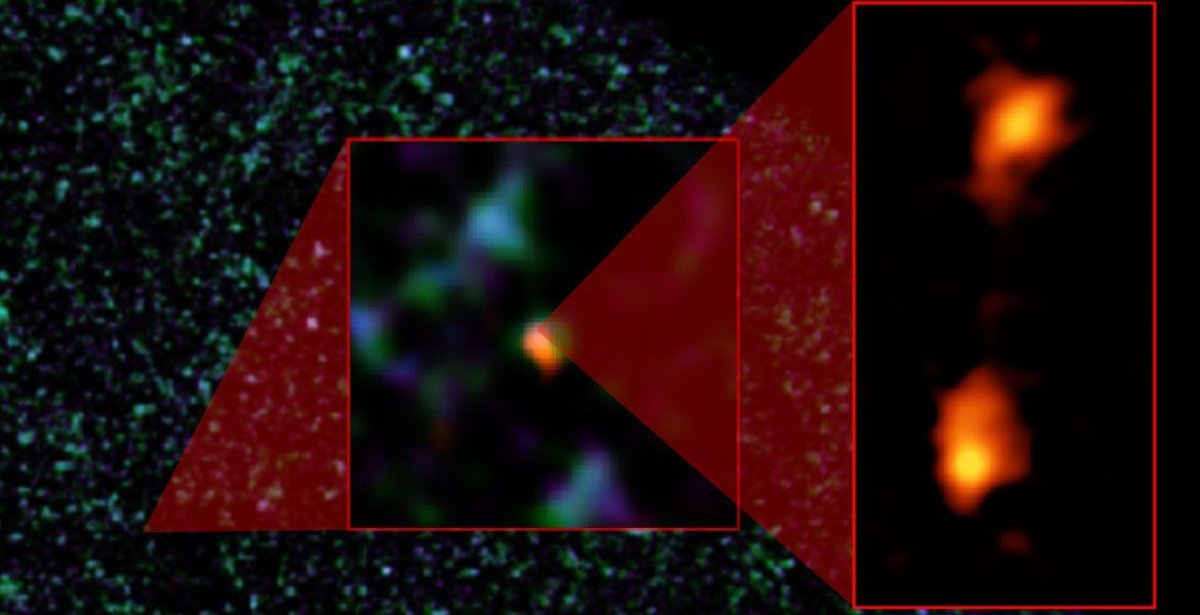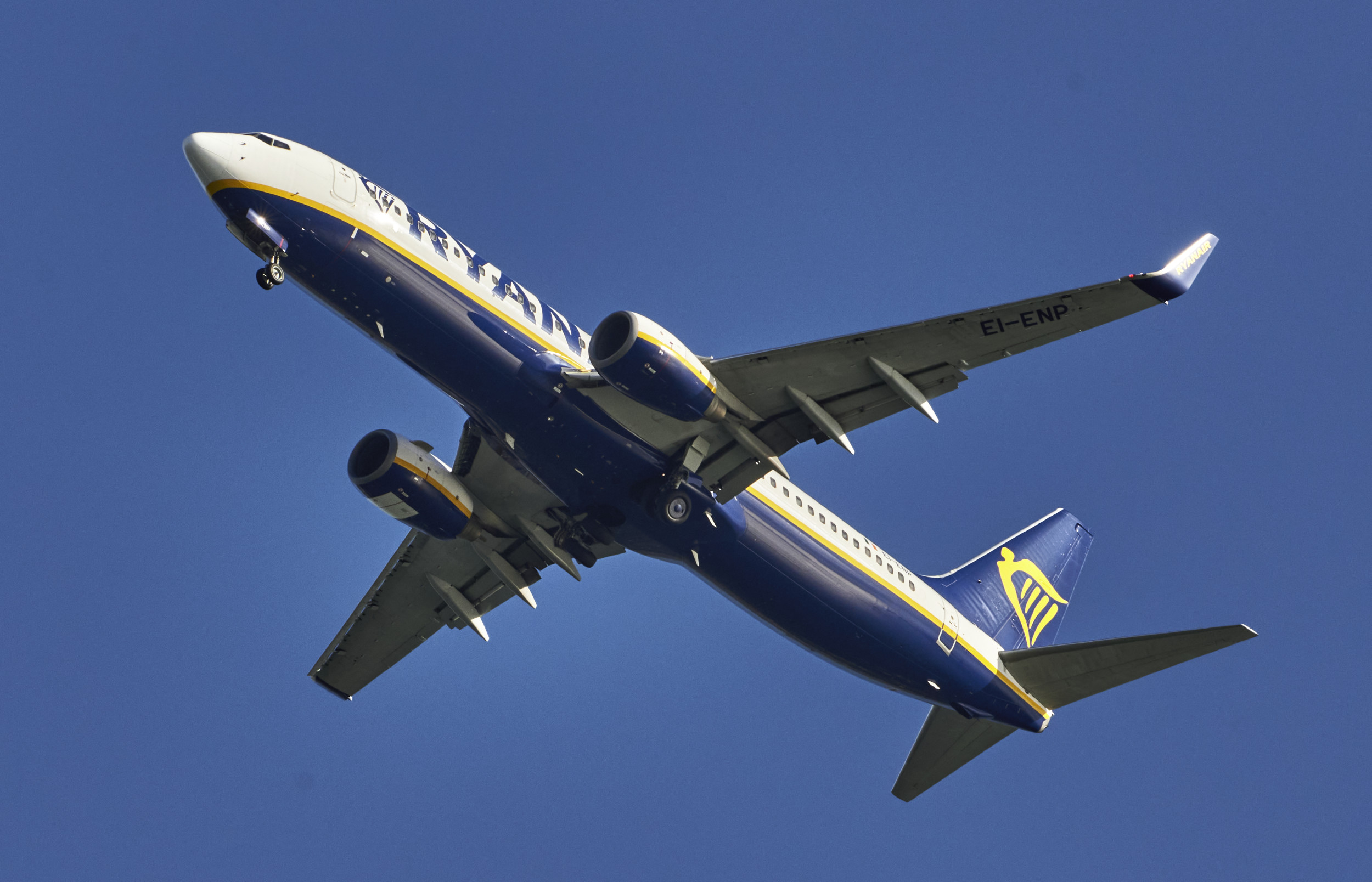
Two ginormous galaxies almost 13 billion light years away are about to smash into each other in the most extreme merger event of its kind. And astronomers on Earth have a front row view.
The hyper-luminous starburst galaxies—the ADFS-27 system—are believed to be two of the most massive systems in the universe. They are located in the Dorado constellation, also known as the swordfish, and are 12.7 billion years away from Earth—meaning they formed when the universe was only around one billion years old.
At the moment, the galaxies are around 30,000 light years away from one another. Their collision course is providing researchers with an unprecedented view into how the universe as we see it today was created.
An international team of researchers led by Dominik Riechers, from Cornell University, New York, discovered ADFS-27 using the ALMA telescope in Chile. "Discovering a hyper-luminous starburst galaxy is an extraordinary feat, but discovering two—this close to each other—is amazing," Riechers said in a statement.
In their study, published in the Astrophysical Journal, the team said a close encounter between the pair during the merger process triggered extremely violet star formation—around 1,000 times faster than the Milky Way galaxy produces stars today. "It's nearly 13 billion light-years away and in its frenzied star-forming action, we may be seeing the most extreme galaxy merger known," Riechers said.

"Finding these galaxies – about 30,000 light-years apart – helps astronomers to understand how very extreme structures form, as they continue to birth stars and become even more massive. These galactic progenitors help us to understand massive galaxies of the present day, as we've tried to understand how these actually form."
Giant galaxies like ADFS-27 are extremely rare in the early universe. Finding two that are coming together provides an unprecedented view into how giant galaxies we see in the observable universe today form. "In other words, this discovery is helping astronomers to understand the timeline of the cosmos," Riechers added.
The two galaxies are moving together at a pace of several hundred miles per second. Astronomers say they will finally merge into one massive galaxy in a few hundred million years.
Uncommon Knowledge
Newsweek is committed to challenging conventional wisdom and finding connections in the search for common ground.
Newsweek is committed to challenging conventional wisdom and finding connections in the search for common ground.
About the writer
Hannah Osborne is Nesweek's Science Editor, based in London, UK. Hannah joined Newsweek in 2017 from IBTimes UK. She is ... Read more
To read how Newsweek uses AI as a newsroom tool, Click here.








